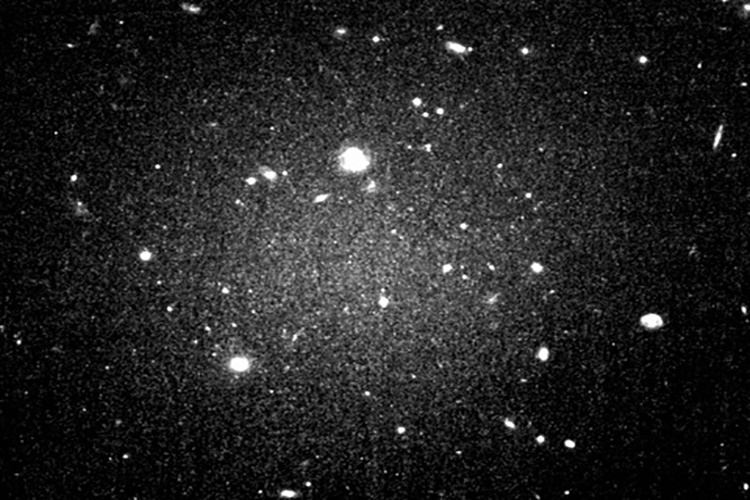Gravity theory saved from death

An international group of astronomers, including physicists at the University of St Andrews, has revived a previously debunked theory of gravity, arguing that motions within dwarf galaxies would be slower if close to a massive galaxy.
The research team examined a theory previously published in the journal Nature which claimed that Modified Newtonian Dynamics (MOND) couldn’t be true because the internal motions were too slow within dwarf galaxy NGC1052-DF2, a small galaxy comprising about 200 million stars.
MOND is a controversial alternative to general relativity, the prevailing Einstein-inspired understanding of the phenomenon of gravity, that requires dark matter to exist, but this has never been proved. MOND does not require dark matter.
Such theories are essential in understanding our universe, as galaxies rotate so quickly they should fly apart, according to known physics.
Various theories have been put forward to explain what holds them together, and debate rages over which is right. The now debunked study claimed MOND was dead. However, this latest study – also in Nature – shows that the earlier work neglected a subtle environmental effect.
The new research argues that the previous work did not consider that the influence of the gravitational environment around the dwarf could affect motions within it. In other words, if the dwarf galaxy were close to a massive galaxy – which is the case here – then the motions within the dwarf would be slower.
Lead author Pavel Kroupa, Professor at the University of Bonn and Charles University in Prague, said: “There have been many premature claims on the death of MOND in very influential journals. So far, none stand up to detailed scrutiny.”
Galaxies rotate so quickly that they should fly apart according to known physics. Two current theories explain this – the first places a halo of dark matter around every galaxy. However, dark matter particles have never been discovered, despite many decades of very sensitive searches, often using large detectors.
The second is MOND, which explains a vast wealth of data on galactic rotation speeds using only their visible stars and gas. MOND does this with a mathematical prescription that strengthens the visible material’s gravity, but only where this gets very weak. Otherwise, gravity would follow the conventional Newton’s law, e.g., in the Solar System – or close to a massive galaxy.
Dr Indranil Banik of the School of Physics and Astronomy at the University of St Andrews, and soon to be of Bonn University, said: “It is remarkable that MOND still makes such successful predictions based on equations written down 35 years ago.”
Dr Hongsheng Zhao, of the School of Physics and Astronomy at the University of St Andrews, said: “Our modelling of the MOND environmental effect was later confirmed by another group.”
Hosein Haghi, Professor of Physics at the Institute for Advanced Studies in Basic Sciences, in Iran, said: “This effect has been known for a long time. These Nature authors were unaware of our papers on how to include it.”
Category Research